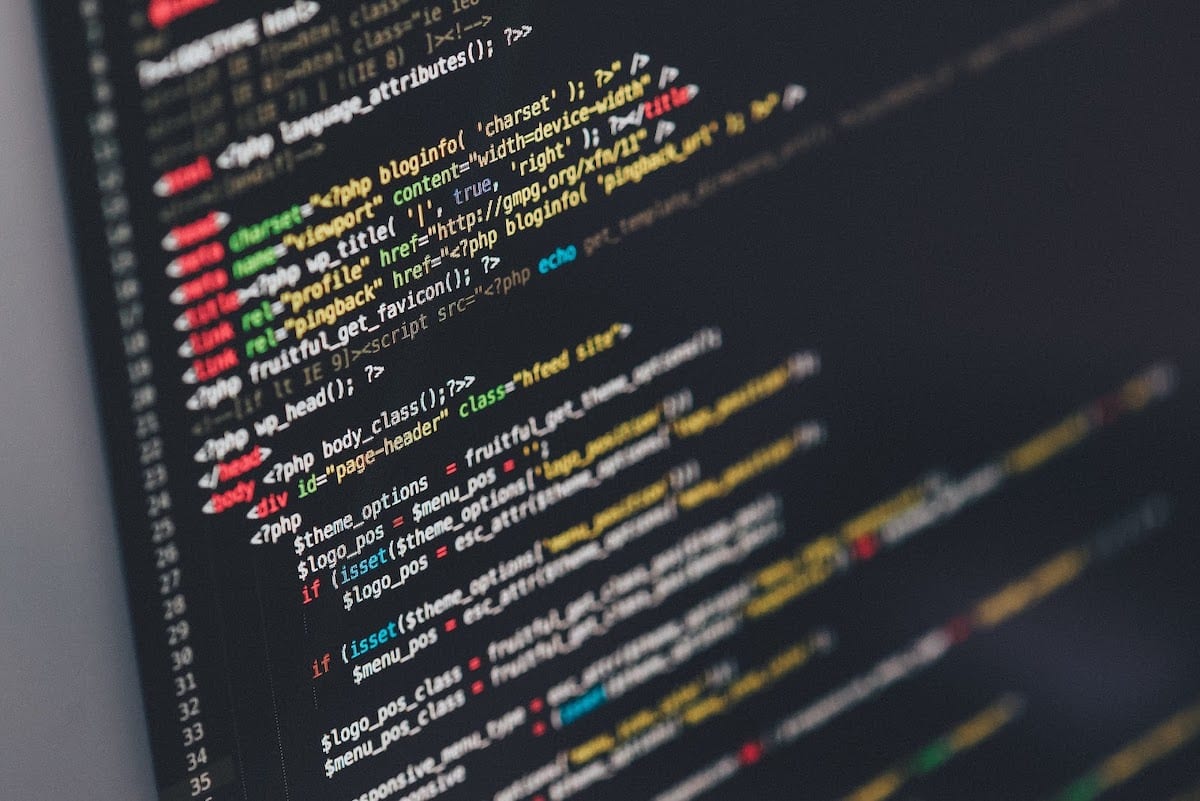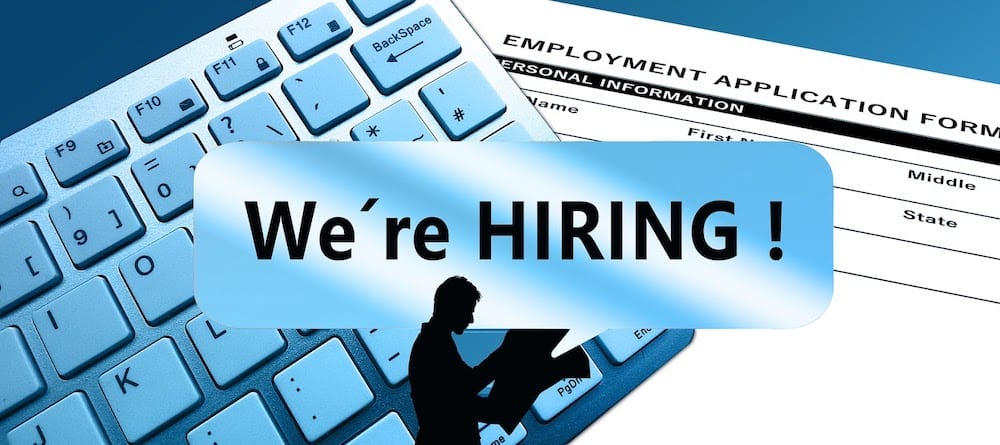The University of Minnesota is one of the most prestigious research institutions in Minnesota, and it leads the pack in many science, technology, engineering, and math fields. With locations in five Minnesota cities, this university has a wide reach within the state. University of Minnesota bootcamp programs for coding and more are available to online students in the state and the US.
University of Minnesota bootcamps include one of the best university coding bootcamps in the US. It teaches students and other adults how to be professional programmers. For their new program, the University of Minnesota teamed up with Trilogy Education Services, and the result of this excellent collaboration is fantastic.
The University of Minnesota coding bootcamp is well-received by both new students and graduates, and its rapidly building an excellent reputation for itself in the world of career and technical education. In this article, we’ll go over everything you need to know about the University of Minnesota’s bootcamps for coding and other tech topics.
University of Minnesota Bootcamp Courses
| Description | There are six University of Minnesota bootcamp programs. The coding bootcamp covers the basics of coding as part of a full stack curriculum, the data science bootcamp teaches students statistics and big data techniques, and the UX/UI bootcamp teaches the basics of coding with a focus on front end web development. The fintech bootcamp prepares students to apply machine learning to the financial industry, the cyber security program teaches students how to protect data in the cloud and traditional networks, and the digital marketing program walks students through an immersive curriculum in a wide variety of digital marketing tools. |
| Cost | $11,245 – $12,245 |
| Location | Online |
| Start Dates | Rolling Admission programs have start dates every quarter |
| Class Time | Full-Time: 20 hrs./wk. Part-Time: 9 hrs./wk. |
| Program Duration | Full-Time: 12 weeks Digital Marketing Part-Time: 18 weeks All Other Subjects Part-Time: 24 weeks |
| Part-Time Courses | Coding, Data Visualization and Analytics, Cybersecurity, UX/UI, Fintech, Digital Marketing |
| Full-Time Courses | Coding |
Top University of Minnesota Coding Bootcamps
The top University of Minnesota coding bootcamps are comprehensive online programs where students learn through interactive sessions and experiential learning activities. Aside from offering one of the best coding bootcamps in Minnesota, UMN also has programs in cyber security, fintech, data science, UX/UI, and digital marketing.
University of Minnesota Coding Boot Camp
At the University of Minnesota Coding Boot Camp, students learn in-demand web development skills through quality instruction. This program is the only Minnesota coding bootcamp available, both full-time and part-time. Full-time students meet for online sessions five days per week for 12 intensive weeks of study, while part-time students cover the full stack curriculum in 24 weeks.
The University of Minnesota full stack web development bootcamp teaches students how to code in Python, Java, and C#, and students complete real-world projects to develop a professional portfolio. With a portfolio of projects and career coaching through Trilogy Education Services, it’s easy for UMN bootcamp graduates to become web developers.
What you will learn at University of Minnesota Coding Boot Camp:
- Web Development Fundamentals. Students will learn how to code in HTML, CSS, and JavaScript and create web pages. Students also learn how to extract data with JSON and update data with AJAX.
- Backend Web Development. Once you learn the fundamentals, you’ll progress to learn the technical skills needed to build a functional website. This includes topics in Node.js, MySQL database, Joins, Wheres, and Counts.
- Improving Performance. The final required class session teaches students how to optimize applications to run efficiently with MongoDB, PWAs, and JavaScript.
- Additional Topics (optional). In this optional module, students work on portfolio development through additional hands-on projects. They also have the opportunity to learn how to code in Python, Java, and C#.
University of Minnesota Data Science Boot Camp
The University of Minnesota Data Science Boot Camp covers a data analytics curriculum full of in-demand skills. Students will learn how to visualize and analyze data to drive decision-making. This program is designed for working adults who want to become data scientists or business analysts. By the end of the program, students will have a strong portfolio to show potential employers.
What you will learn at University of Minnesota Data Science Boot Camp:
- Statistics and Excel. To kick off the data analytics curriculum, students start by learning basic statics concepts and how to use Microsoft Excel to forecast and model data.
- Data Analysis Using Python. The next module in this data science program teaches students how to use Python, NumPy, Pandas, and Matplotlib to analyze data.
- Databases. Students will learn how to use SQL databases like MySQL and non-SQL databases like MongoDB.
- Data Visualization. One of the most in-demand skills in data analysis is data visualization so that data professionals can present difficult material in an intuitive way. This module teaches students how to create interactive data visualizations on webpages using HTML, CSS, and JavaScript.
- Capstone Project. All University of Minnesota bootcamp data science students finish their program with a group capstone project. Students use real publicly available datasets to answer a question or solve a problem.
University of Minnesota Cybersecurity Boot Camp
The University of Minnesota Cybersecurity Boot Camp takes qualified students and turns them into cyber security industry professionals. This program teaches students commonly used security tools and also prepares them for professional cyber security certification exams such as CompTIA Security+ and Certified Ethical Hacker.
What you will learn at University of Minnesota Cybersecurity Boot Camp:
- Systems Administration and Network Security. Students will learn about cyber security fundamentals and how to apply them to both systems administration and network security. Class sessions will cover wireless and cloud security, Wireshark, Linux and Windows server configuration, and Bash scripting and programming.
- Security Best Practices. This module covers both defensive and offensive cyber security techniques. Topics covered include Splunk, forensics, data recovery, SQL injection, penetration testing, and Zenmap.
- Capstone Project. Students will put their intensive training to the test with a group project based on a real-world scenario. At the end of this module students will receive their program completion certificate, but they will need to register for any additional professional certifications they want to earn.
University of Minnesota Fintech Boot Camp
The University of Minnesota Fintech Boot Camp teaches students about blockchain, cryptocurrency, coding, and how to use machine learning in finance in just nine hours per week. Like the other UMN bootcamps, students learn from real-life examples, class activities, and hands-on projects.
What you will learn at University of Minnesota Fintech Boot Camp:
- Foundation in Finance. This module brings all students to the same page on basic financial concepts since students start with a wide range of industry experience.
- Coding in Python. The next section of class material teaches students how to program in Python to do financial analyses. Topics covered include APIs, Pandas, NumPy, SciPy, PyViz, and SQL.
- Finance and Machine Learning. Next, students progress to using machine learning techniques to predict financial outcomes. Students will learn how to use different techniques such as linear regression, k-Means clustering, neural networks, and algorithmic trading.
- Cryptocurrency. While this program isn’t strictly a blockchain bootcamp, it does spend several class sessions covering cryptocurrency, Ethereum, smart contracts, and blockchain.
University of Minnesota UX/UI Boot Camp
Working as a UX/UI developer is a dream job for creative people who enjoy complex projects and solving problems. With this UX/UI designer bootcamp, Minnesota’s largest research university teaches students how to identify user needs through research and how to design a user interface that meets those needs.
What you will learn at University of Minnesota UX/UI Boot Camp:
- Understanding the User. In the first module, students learn how to research user experience to understand what users want from an application. This soft-skills training includes topics in empathy, persona creation, and user testing.
- Design Theory for Website Interfaces. Students learn key visual design principles and how to apply them to a user interface. Students will also learn how to use Atomic Design and Adobe XD.
- Building Websites. After learning how to design user interfaces, students will study how to use JavaScript to create front end prototypes. Students will build on prototypes using HTML, CSS, and GitHub to create responsive designs.
- Capstone Project. The final step in this user experience design bootcamp is to complete a group capstone project to practice in-demand skills in UX/UI design. This project can be used as part of a professional portfolio when students enter the job market.
University of Minnesota Review
There are only a few reputable sources for honest coding bootcamp reviews. Unlike colleges, which have been around for centuries, coding bootcamps are a newcomer to the education scene, so there’s limited information available about the experiences of graduates, with a few notable exceptions.
In most reviews, the University of Minnesota’s coding bootcamp scores quite well. Overall, the University of Minnesota’s coding bootcamp receives an average rating of four out of five stars, which is excellent. We rank this program highly because it is well-designed and provides students with an up-to-date coding curriculum.
University of Minnesota Cost

Coding bootcamp costs vary, but you can generally assume that an American program will cost between $8,000 and $20,000 for the entire course. With that in mind, the University of Minnesota coding bootcamp cost is relatively inexpensive. The part-time programs cost $11,245, and the full-time web development bootcamp costs $12,245.
Even if these numbers seem costly, just think back to what one reviewer said: the certificate and experience he gained in the program doubled his salary. At the end of the day, coding bootcamp is an excellent investment for those seeking to improve their wage and career prospects over the long term, just like a college education.
This program isn’t just for students. Anyone can apply, regardless of their work or education history, as it’s a non-credit program at the university. Undergraduate students, grad students, and working adults can all benefit from classroom instruction, professional development opportunities, and a range of career services.
If you’re worried about how much the University of Minnesota coding bootcamp costs, there are several different payment plans you can explore. Additionally, plenty of non-affiliated organizations offer scholarships for coding bootcamp, so be sure to check them out.
University of Minnesota Instructors
Coding bootcamp instructors must be coding experts themselves who can teach to different skill levels through innovative instruction. They must be willing to help struggling students whenever possible, which can happen a lot in programs as fast-paced as coding bootcamp. By all accounts, this is undoubtedly the case in the University of Minnesota’s program.
Several reviewers mention how great their experience was with the instructors, TAs, and tutors in this coding bootcamp. From what we can gather, the instructors at the University of Minnesota’s coding bootcamp were helpful and knowledgeable and delivered difficult material through quality instruction. Other students mention how helpful their TAs were.
As far as we can tell, the University of Minnesota’s coding bootcamp nailed it with its excellent instructors and friendly staff. Even though this is a fantastic place for beginners, it’s still essential to prepare for your coding bootcamp before classes start so you can get the most out of the program. You can do this by learning more about what a coding bootcamp is.
University of Minnesota Schedule

The coding bootcamp at the University of Minnesota follows the typical schedule of most of the other Trilogy-associated bootcamps. Part-time programs allow students to study or work during the day and attend classes at night, and these classes run on two weekdays from 6:30 PM to 9:30 PM, and again on Saturday from 10:00 AM until 2:00 PM.
This flexible program works well for most students, but don’t expect to be done when the class gets out. The program advises students to expect an additional 20 hours of coursework to complete at home during the remaining hours of the week.
Most students find it difficult to work during the full-time program, but it only lasts half as long as the part-time bootcamp. Full-time students don’t need to do as much coursework after class; the part-time program runs for 24 weeks while the full-time runs only 12.
University of Minnesota Curriculum

The curriculum for this coding bootcamp is extensive, and most students describe it as intense but manageable. The fast-paced curriculum of this course was intensively researched and developed by Trilogy, who has a long track record of proven student success. For the full stack web development course, students can expect to learn a variety of coding languages.
For web development, the University of Minnesota’s coding bootcamp doesn’t spare any of the most popular coding languages. Students learn CSS, Java, JavaScript, Bootstrap, jQuery, Node.js, Express.js, React.js, MongoDB, MySQL, Java, Command Line, Git, and HTML. While this list may seem long, keep in mind that you’ll have a long time to learn it.
In addition to full stack development, the university also offers programs in data science and cyber security. For data science, the curriculum mirrors the full stack program but also deviates in a few respects. Students learn coding languages such as Excel, JavaScript, Python, SQL Databases, and Tableau, along with other skills needed for the complex tasks of a data scientist.
Cyber security requires learning fewer coding languages than either the coding bootcamp or the data science bootcamp. Instead, students learn the skills to become cyber security experts using tools such as CompTIA Security+ and CompTIA Network+.

"Career Karma entered my life when I needed it most and quickly helped me match with a bootcamp. Two months after graduating, I found my dream job that aligned with my values and goals in life!"
Venus, Software Engineer at Rockbot
University of Minnesota Reddit
Reddit is a popular source for first-hand opinions on a wide range of topics, including career and technical education. Coding bootcamps are a hot topic on this forum, and views from former, current, and prospective students vary. In this case, there isn’t much on the platform about the University of Minnesota’s coding BootCamp.
Even still, the general consensus on the forums about Trilogy coding bootcamp programs seems to be good. If you’re interested in gauging the Reddit community about this coding bootcamp, be sure to check back frequently and look around. Hopefully, time will result in more former students sharing their opinion, but it seems like we’ll have to rely on the Course Report for now.
University of Minnesota Job Placement

Coding bootcamps and job placement go hand-in-hand. The University of Minnesota’s coding bootcamp hasn’t been around long enough to produce accurate job placement statistics, so we’ll have to wait and see. From what we gather from existing reviews, graduates of this program do exceptionally well in their job hunt after graduation.
All University of Minnesota bootcamps have a career services team, and coding bootcamps have a history of excellent job placement. Although this program doesn’t publish statistics, many coding bootcamps that do publish information claim that placement rates are between 70% and 90%, which is impressive, however, you choose to look at it.
University of Minnesota Coding Bootcamp Certificate
When you finish your bootcamp program, you’ll get a coding bootcamp University of Minnesota certificate issued by the College of Continuing and Professional Studies. This is the same college that offers a wide variety of for-credit and non-credit professional development programs for adults looking to improve their careers.
The certificate shows that you meet the rigorous standards of the University of Minnesota and Trilogy Education Services. The career services team can help you write your resume and cover letters to explain this credential to potential employers. Career services also have connections with employers who are specifically looking for bootcamp graduates.
University of Minnesota Bootcamp Admissions Process
The University of Minnesota bootcamp admissions process is simple, especially compared to a traditional undergraduate or graduate degree admissions process. You can breeze through the process in these steps:
- Fill out an online contact form. Fill out a program interest form with your contact information. You can find the form on the official University of Minnesota bootcamp website. An admissions officer will reach out to talk with you about the next steps.
- Talk with an admissions team member. After you fill out your program interest form, an admissions staff member will contact you for a quick phone interview. The purpose of the interview is to make sure you understand the program and that it fits with your career goals.
- Fill out a short application. After your interview, you’ll receive an official application. You’ll have a chance to provide information about your previous education and work experience, and you’ll be asked to describe your career goals.
- Take a short assessment. Once the admissions team receives your application, they’ll send you a quick problem-solving assessment. The goals of the assessment are to show that you are a critical thinker and that you are tech savvy enough for online learning.
- Sign an enrollment agreement. Congratulations, you were accepted! The University of Minnesota College of Continuing and Professional Studies will now send you a list of payment methods and financial aid options. Choose one, pay your deposit, and sign the enrollment agreement before classes start.
University of Minnesota Bootcamp Payment Options
Payment options for a University of Minnesota bootcamp are different than for a college degree. Bootcamp students aren’t eligible for federal financial aid or most student loans. Fortunately, most programs are part-time, so bootcamp students can keep earning an income while they study. We’ve listed some University of Minnesota bootcamp payment options below.
Interest-free Payment Plan
Rather than paying the whole cost of tuition up front, you can spread it out into monthly payments for up to 24 months. With an interest-free payment plan, you only have to pay the cost of tuition, unlike a loan that accrues interest on your balance.
Early Registration Discount
University of Minnesota bootcamps usually have a tuition discount for students who register before a certain date. Ask about the discount during your admissions interview. It might make sense for you to delay enrollment until the next start date to take advantage of this opportunity.
University of Minnesota Alumni Scholarship
Students who have attended other University of Minnesota programs get a $500 scholarship to use towards their bootcamp tuition. If you are a UMN alumnus, make sure to tell the admissions team during your enrollment process.
Is the University of Minnesota Coding Bootcamp Worth It?
Yes, the University of Minnesota Coding Bootcamp is worth it. Not only will students learn in-demand skills from a dedicated team of instructors, TAs, and tutors, but they’ll also get access to a wide range of career services to help them achieve their career goals.
In addition to its coding bootcamp, the University of Minnesota also has bootcamps for cyber security, fintech, UX/UI web development, data science, and digital marketing. All programs are taught through online classes, so you don’t need to go to Minnesota to take advantage of these programs.
University of Minnesota Bootcamp FAQ
The University of Minnesota bootcamp length varies based on the program you choose. Only the coding bootcamp has a full-time option, which lasts 12 weeks. All other programs are offered part-time and take 24 weeks to complete. The only exception is the part-time digital marketing bootcamp which lasts 18 weeks.
Do I need to have previous experience in coding before enrolling?
You don’t need any previous coding experience to enroll in any of the University of Minnesota bootcamps. However, students without any experience are encouraged to explore program pre-course tutorials. Background knowledge isn’t necessary, but it will help you get the most out of your bootcamp program.
Can non-students enroll in the University of Minnesota’s bootcamp?
Yes, the University of Minnesota allows all qualified adults to attend its bootcamps regardless of college enrollment status. In fact, the programs are designed with working adults in mind. Adults who haven’t been students in several years might find it helpful to study the University of Minnesota bootcamp prep tutorials to prepare for virtual classes.
Does the University of Minnesota offer college credit to bootcamp students?
No, the University of Minnesota’s bootcamp is a non-credit program. Instead, bootcamp graduates receive a coding certificate from the university.
About us: Career Karma is a platform designed to help job seekers find, research, and connect with job training programs to advance their careers. Learn about the CK publication.



